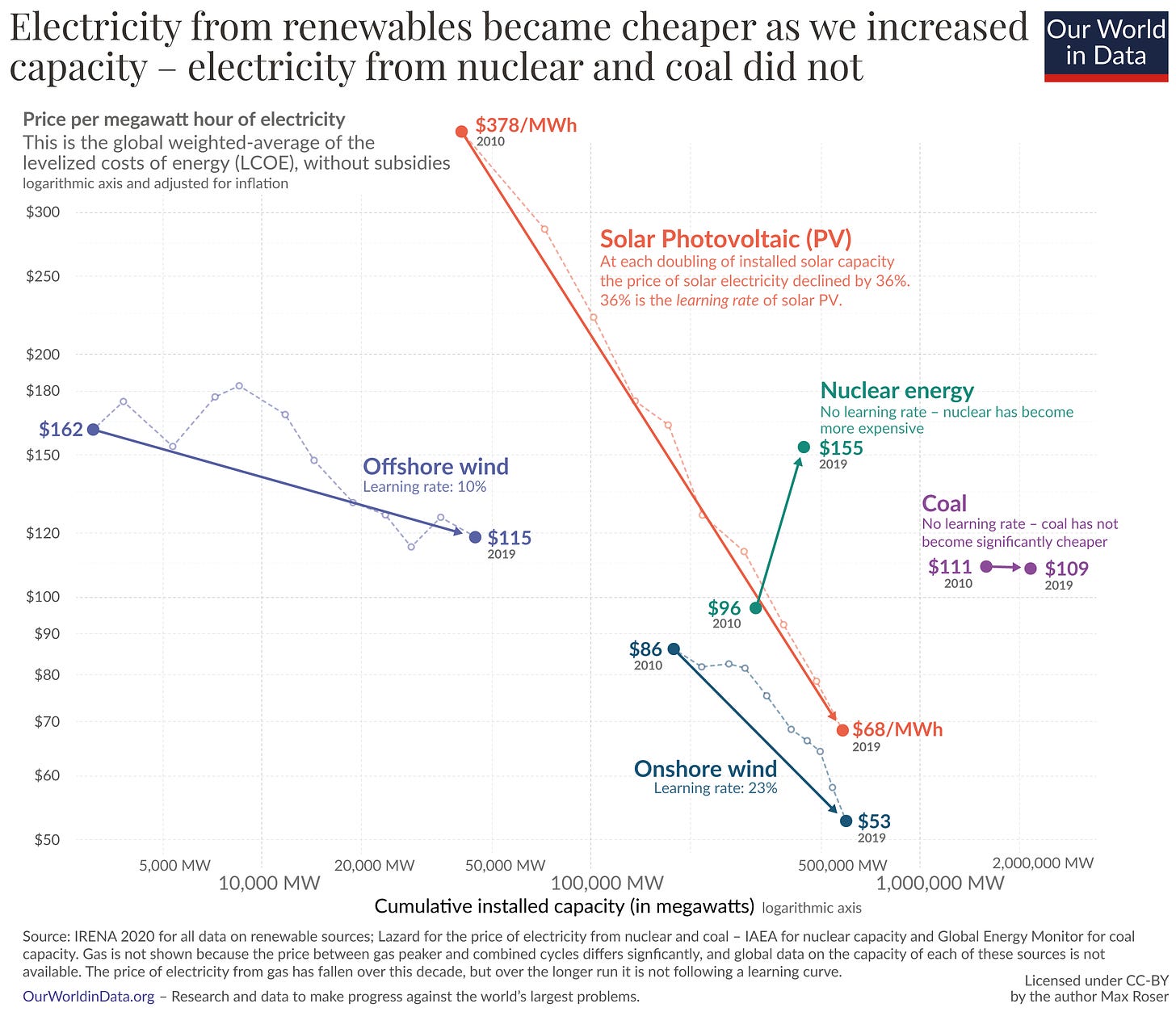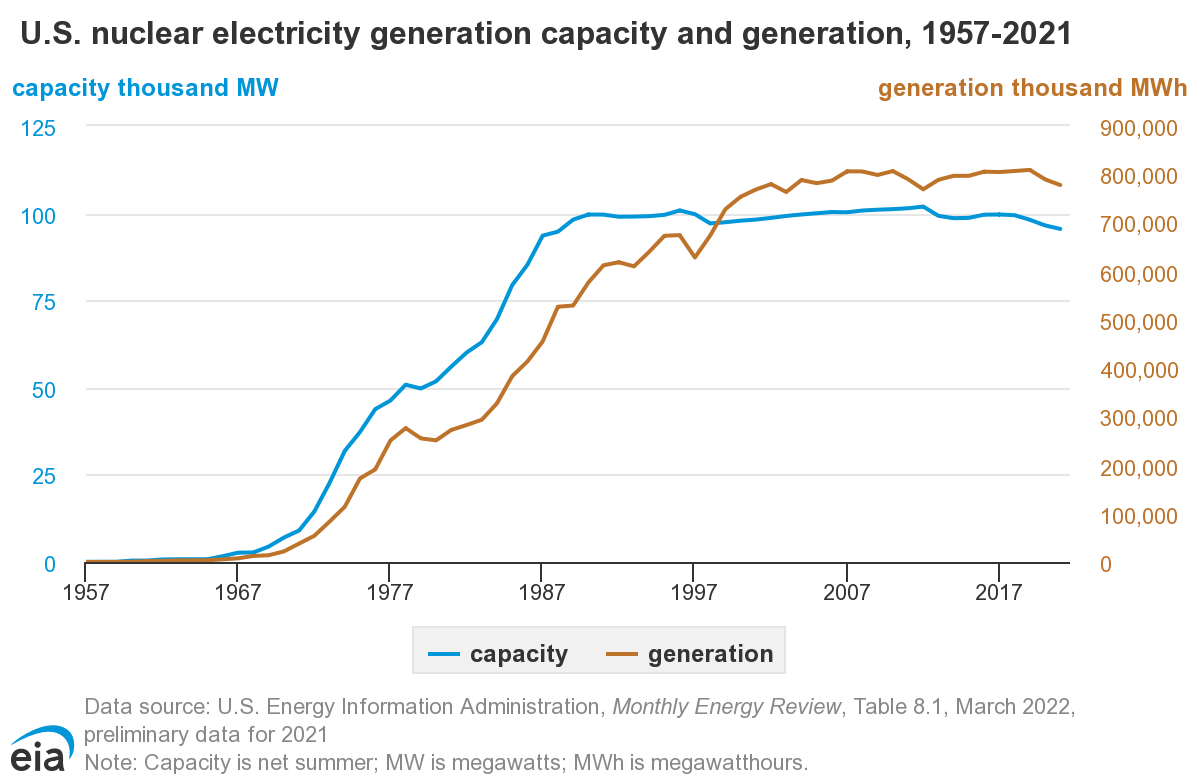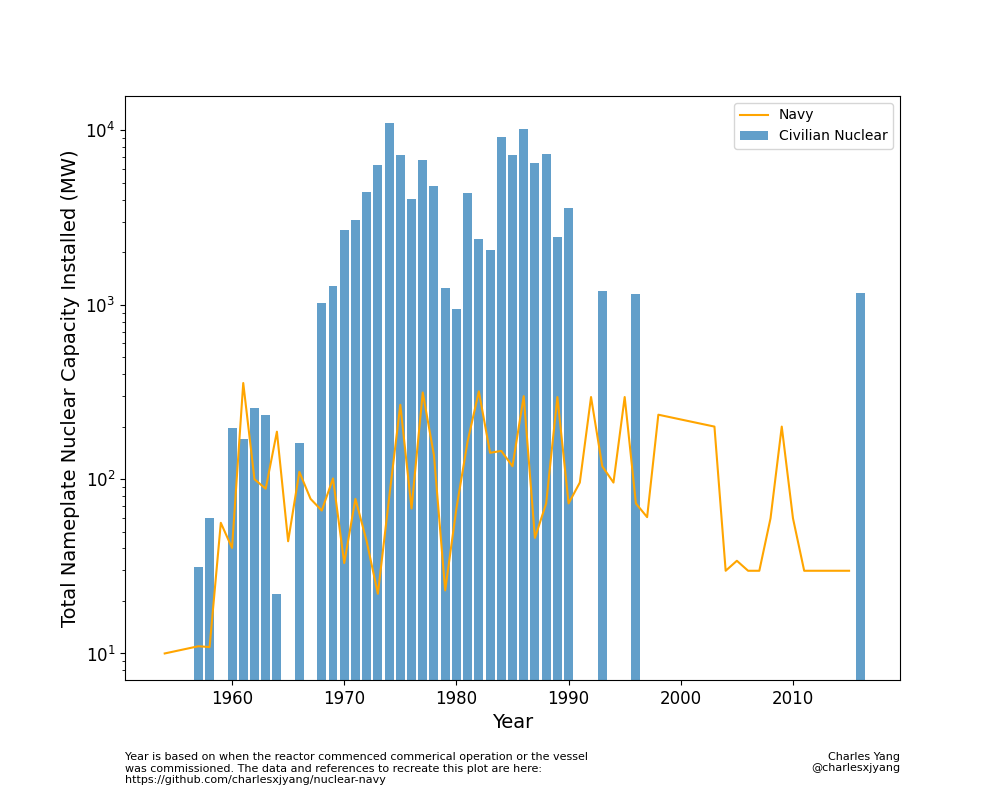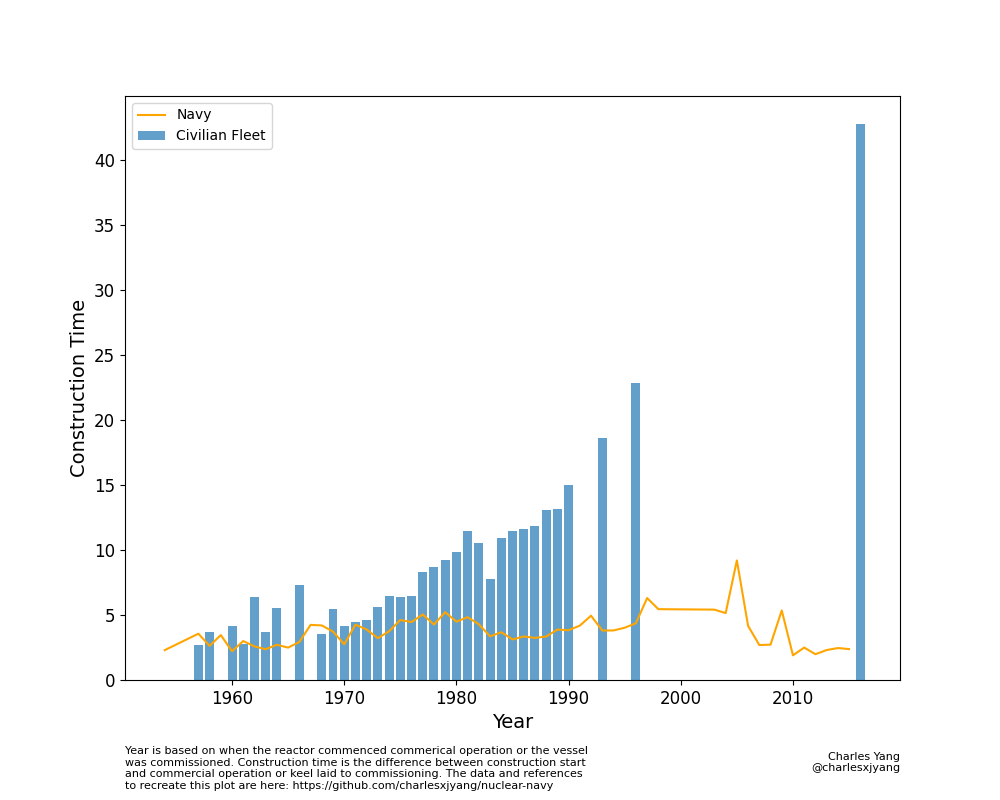This is a repost from my substack: https://charlesyang.substack.com/p/building-back-nuclear-in-america. I'm also @charlesxjyang online
The views expressed in this blog are entirely my own and do not necessarily represent the views of the Department of Energy or the United States Government.
Nuclear: The Problem Child of Clean Energy Technology
Recently, nuclear energy has returned in vogue, as a prominent carbon-free non-intermittent source of energy. Consequently, there is a burgeoning interest in understanding how to build nuclear power plants in the US safely and cost-effectively once again. In particular, nuclear seems to be a stubborn technology. Unlike many other technologies, the more of it we build, the more expensive it gets (Figure 1). For example, the recently completed Votgle 3 and 4 nuclear reactors in Georgia came in 7 years behind schedule at more than double the initial cost estimate.

Figure 1: Our World in Data
Many attribute the permitting process i.e. the process by which we allow something to be built, as the culprit for nuclear’s rising costs. While there is unanimous agreement on the necessity for meticulous planning and scrutiny due to nuclear power's formidable potency, the exact form that takes is still debated. Many argue that the regulatory stranglehold following the Three Mile Island incident in 1979 led to a halt in the construction of nuclear reactors in the US I won't delve into that argument here; for a thorough examination of this debate, see Brian Potter’s work at IFP).
However, it is largely the case when you look at power grid data (Figure 2) that we basically stopped building nuclear reactors in the US after 1979 (with the exception of Votgle 3 and 4, which started construction in 2013). Remarkably, despite the 50-year hiatus, due to operational improvements, our current nuclear fleet generates more energy than before, even with fewer reactors online.

Figure 2: EIA data
But the narrative that we stopped building nuclear in the US after 1979 is actually not entirely true…
A Nuclear Navy that Builds
Because we have a nuclear navy that actually has been building and operating nuclear reactors in naval vessels this entire time. To the best of my (limited) knowledge, this work provides the first direct comparison of the civilian nuclear fleet to the US Navy’s.[1]
The graph below plots the total nameplate installed nuclear capacity for the civilian nuclear fleet and the navy (note the semi-log scale). During the nuclear industry's heyday, the navy was installing only about 5% of the total nuclear capacity in the US. However, it maintained a steady pace of nuclear capacity buildout even after the Three Mile Island incident.

Figure 3: Nameplate Nuclear Capacity Installed by Year
Notably, the US Navy not only continued to construct and operate nuclear reactors after 1979, but it also managed to keep construction times under control, even as the civilian nuclear fleet faced significant slowdowns. [2]

What set the US Navy apart, that allowed it to continue to build nuclear reactors safely and cost-effectively, while the civilian sector was not? More specifically: what can we learn from the Navy’s process and philosophy around building and how does it differ from the current nuclear permitting and regulatory regime?
Next time, I’ll discuss the man behind the US Navy’s success and how he built an organization and a culture that decades later continues to operate effectively at building one of the most complex and dangerous technologies we have today.
In the meantime, if you want to learn more about why nuclear is expensive and what we can do about it, I cannot highly recommend enough Brian Potters review of this subject [IFP][Construction Physics substack].
Methods
You can find the data and code on github if you want to fork or pull request or jump right into the code on replit.
Civilian nuclear data was based on this wikipedia table. US Navy vessel construction data was from a 2017 Department of Energy Report appendix, while estimates for the naval nuclear reactor capacity was from the Lynceans group [1][2] and cross-referenced with Hewlett and Duncan 1974. These sources are also cited in the code and README in the repository.
- ^
If you have seen similar work visualizing nuclear data for the navy, please do share!
- ^
There are several important differences to note. The first is that the Navy’s really builds small modular reactors, whereas the civilian side builds larger power plants. The second is that the Navy’s SMRs are subject to much stricter performance requirements e.g. the ability to quickly ramp up/down power capacity, whereas conventional SMRs are usually baseload power (to say nothing of the fact that Navy SMR’s also need to fit aboard a pressurized vessel and withstand torpedo attacks).
